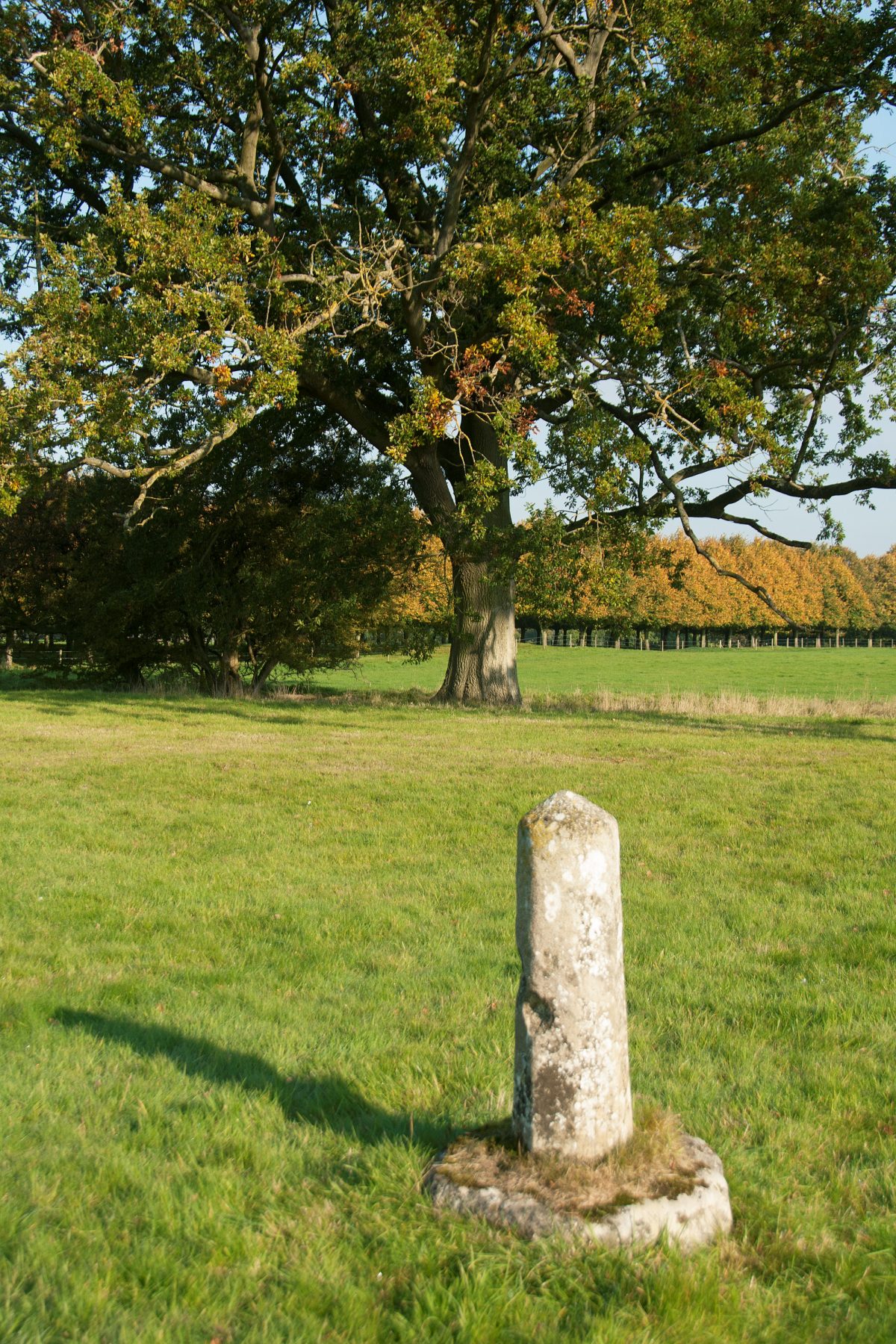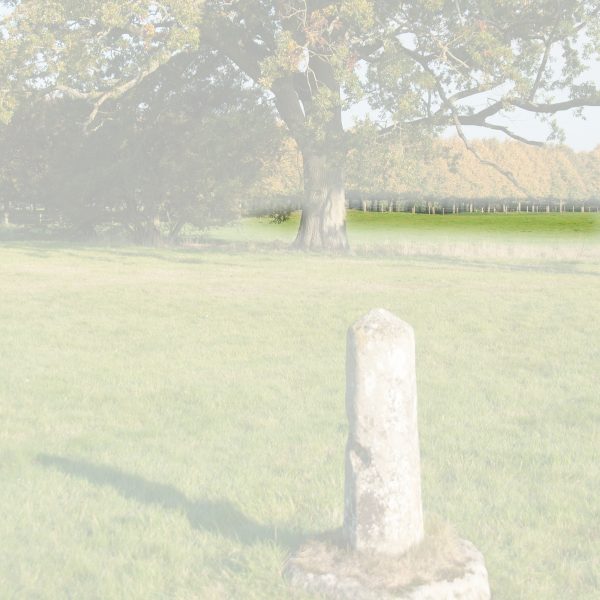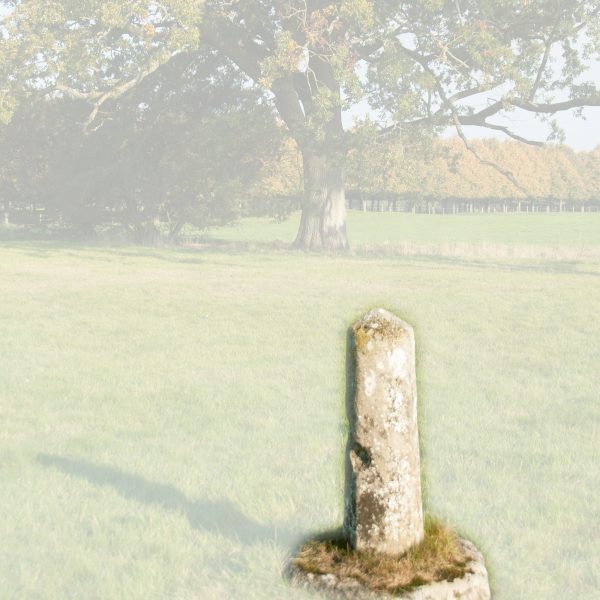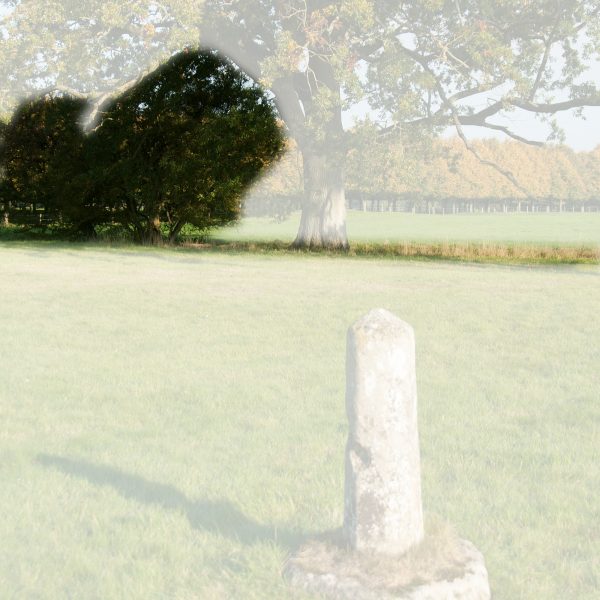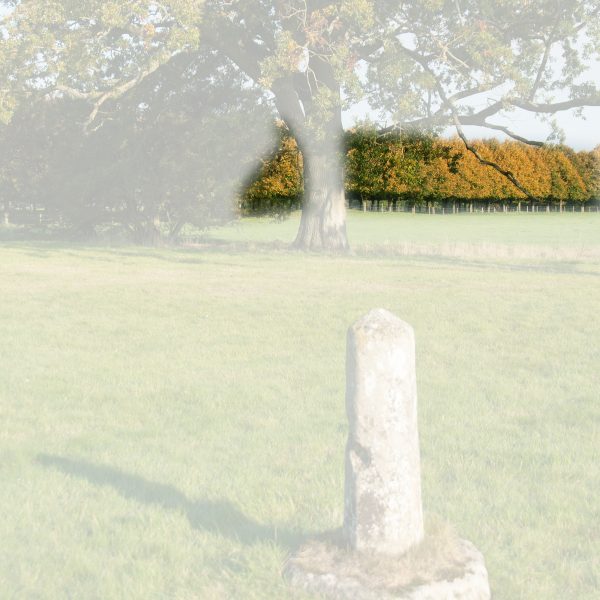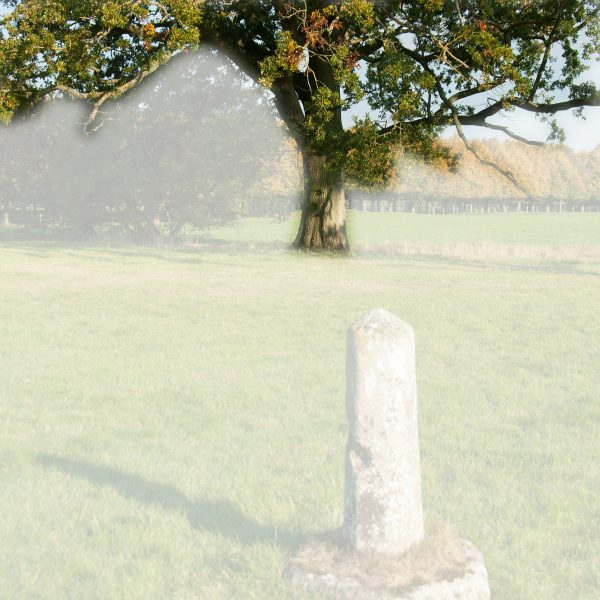Your first example
To get you into a detective frame of mind, first study this photograph:
Think about:
- How can you tell that this a man-made, designed landscape?
- Is it formal or informal or a combination of both?
- What is the oldest built element? Try and guess its age and purpose.
- What is the oldest planted element?
- How is this landscape used today?
Explore the scene
Tap each time period to reveal what’s in the photograph:
Roman
The photograph (2015, near Stamford) was taken from the old Road from London to York. This road follows the route of the Roman road later named Ermine Street by Saxons (possible location highlighted in the picture).
This is Burghley Park, which has a significant historic landscape, with elements both formal and informal. It is therefore listed on the national Parks & Gardens Register, Historic England (HE) Grade II*.
Medieval
An Eleanor Cross is the oldest built element here. Queen Eleanor, wife of Edward I, died at Harby near Lincoln.
On 4 December the funeral procession took her embalmed body from Lincoln to London for burial on 17 Dec in Westminster Abbey. It rested at Stamford on the night of 5/6 Dec 1290.
Later, c.1293, a memorial Eleanor Cross was erected at every place where the body rested, including in the centre of Stamford and here beside Ermine Street.
Elizabethan
In 1587 William Cecil, Chancellor to Queen Elizabeth I completed Burghley House in Lincolnshire and added Gardens and Ridings.
His deer park comprised three parks: High Park, Middle Park (seen here) both in Northamptonshire and Low Park (since mid-20C in Cambridgeshire).
The sunken fence highlighted in the picture may have been one of the deer park boundaries.
Restoration & 20th Century
Formal: The avenue, c 1702/3, four rows of common lime trees (Tilia x europea) led from the south front up to the major road from London to York (named Ermine Street by Saxons and later Great North Road, now A1).
The avenue, called Queen Anne’s Avenue, after the reigning monarch, was re-planted in 1987 with Tilia x europea ‘Pallida’ (seen here, not yet fully mature).
18th Century
Informal: The singleton native oak tree (Quercus robur) acts as an ‘eye-catcher’ in the park, breaking the line, and taking the eye off the utilitarian fosse or sunk fence (a trench for drainage).
Further detail
In the mid to late 18C, Lancelot ‘Capability’ Brown (1716-1783) probably planted the oldest planted element here, the now veteran oak placed to interrupt the long line of the sunk fence.
This tree also acts as a marker, or ‘gate guardian’, for the Eleanor Cross, as part of informal, naturalistic landscape park designs, that included his introduction of a river-like lake. Brown kept most existing formal avenues in the park. However, he did cut down some trees in some ‘Ridings’ on the north west, to open up views from the house towards Stamford church spires.
The landscape today remains a deer park, but is also farmed, and hosts sports including carriage-riding, game shooting, cricket and other visitor attractions such as craft fairs and concerts. Since 1961, the park has hosted the famous Annual Burghley Horse Trials. If you wish, you can read more about the park and gardens here:
https://www.historicengland.org.uk/listing/the-list/list-entry/1000359

